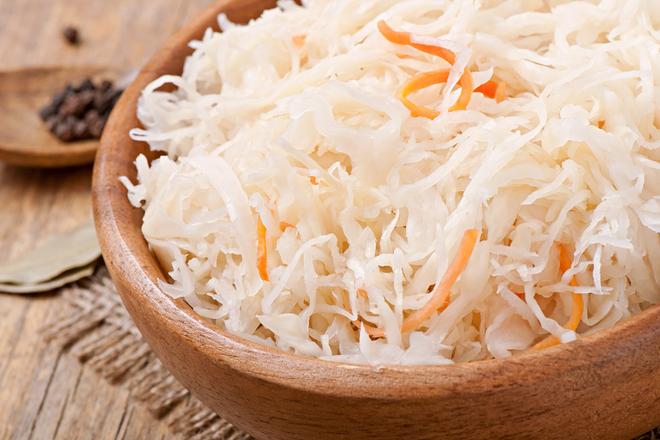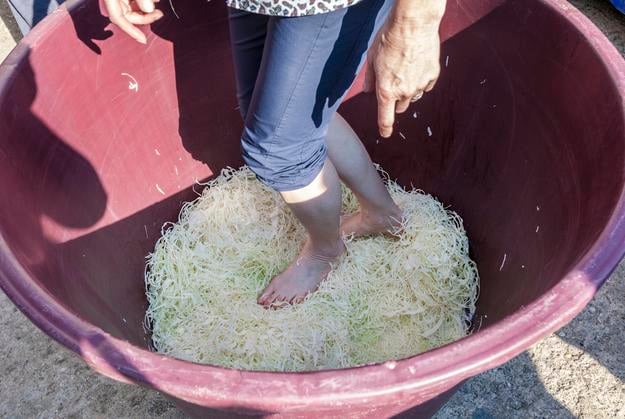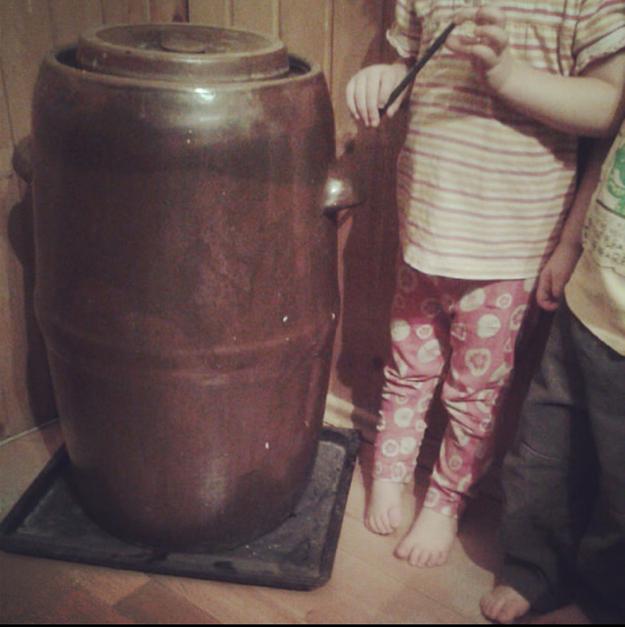As autumn proceeds, signs along small town roads read "Shredded cabbage here". It's time to make sauerkraut, kyslá kapusta.
Admittedly, you can just buy it in the store, or better at the market. But is store-bought ever as good as making it yourself? One advantage is that when you make it yourself you can start to eat it before it gets very sour. And you can control what ingredients go into it, adding or avoiding spices according to your taste. If you do buy sauerkraut, make sure it doesn't contain preservatives, as it kills all the bacteria, even the good ones.
In recent years, all the multiple benefits of fermenting vegetables has come to the fore, especially probiotics and prebiotics (probiotics are good bacteria, the ones that live in your gut affect everything from mental health to the immune system to digestion, prebiotics are food for probiotics). Amazingly, there is even more vitamin C in sauerkraut than in fresh cabbage!

For generations, however, making sauerkraut was just a way to preserve the harvest for the winter. For Slovaks, sauerkraut was such an important part of the diet that sauerkraut from Stupava was the second Slovak food added to the European Protected Designation of Origin list.
Sauerkraut is admittedly an acquired taste for many. It's sour and sharp. One way of mellowing the taste is to cook it, such as the Slovak recipes for various kinds of sauerkraut stew. My favourite Slovak dish is strapačky, halušky pan fried with bacon and sauerkraut. While the probiotics are no longer alive, new research shows that even cooked probiotics still have beneficial effects.
Raw sauerkraut pairs well with fatty foods, like bacon and sausages, and carbohydrates, like potatoes or pasta. It also goes well as a topping on soups, especially legume soups like handful soup. Once you get used to the taste, you'll start to crave it. Try just a little bite everyday over a few weeks.
Sauerkraut is traditionally made in large quantities, in large ceramic crocks that sit in the basement. But no fear, it can also be done just a little at a time in your kitchen, enough to fit in a regular jar, sit on your counter and fit in your fridge.
Making sauerkraut is very simple. Mix shredded cabbage with salt, massage it, stuff it in a jar, and let it sit. For a few more directions, read on.


 Sauerkraut is a traditional Slovak food. (source: timolina on freepik)
Sauerkraut is a traditional Slovak food. (source: timolina on freepik)
 Stupavské zelé has to be treated in a traditional way, before fermenting. (source: TASR)
Stupavské zelé has to be treated in a traditional way, before fermenting. (source: TASR)
 Traditional ceramic sauerkraut crock. (source: Naomi Hužovičová)
Traditional ceramic sauerkraut crock. (source: Naomi Hužovičová)